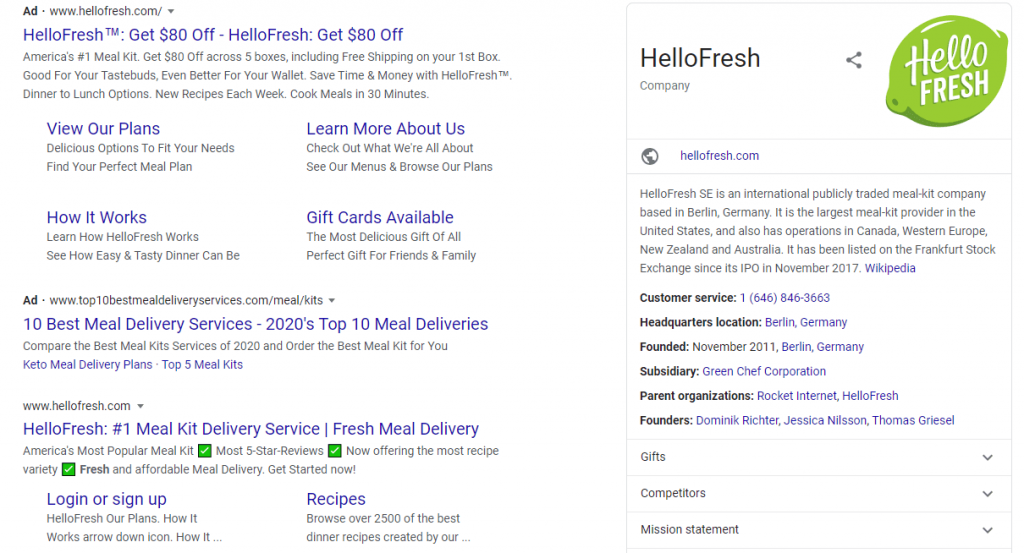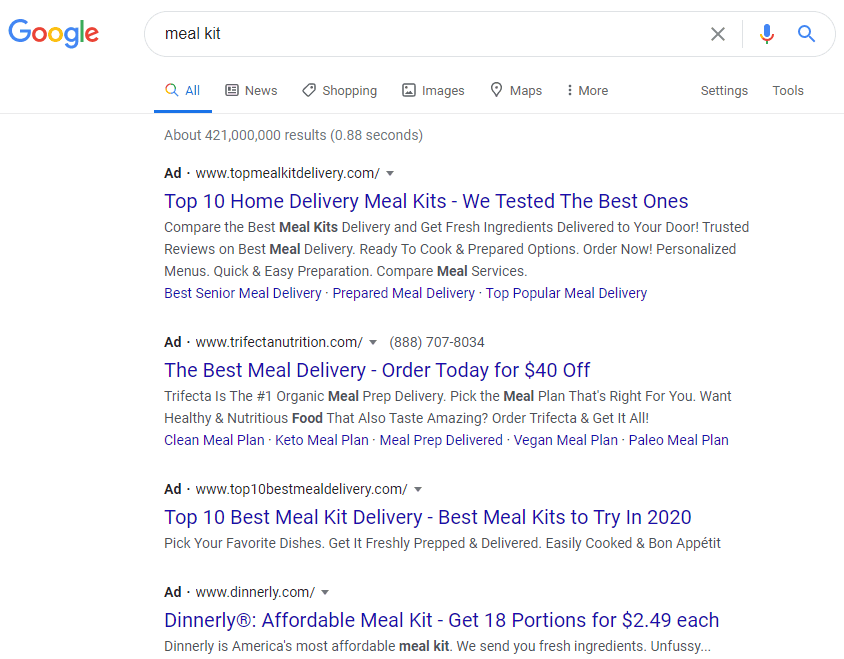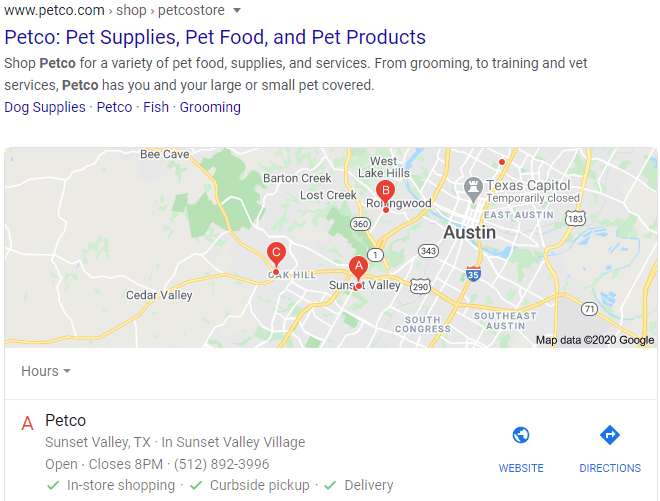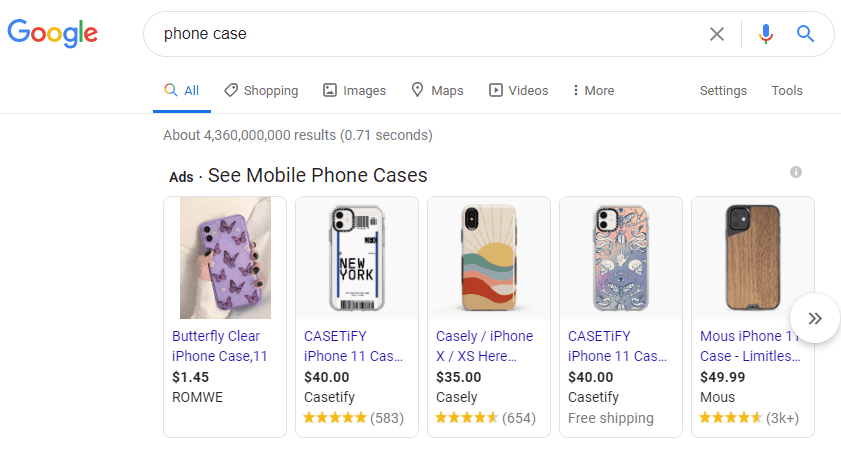If you’re building an online presence, you’ve probably heard a lot about Search Engine Optimization (SEO) and Pay Per Click (PPC) advertising. While both strategies are valuable, if you haven’t been using them to their full potential, you could be sacrificing leads, profits, and better Search Engine Results Page (SERP) rankings.
If you’ve been utilizing these tools separately, it may be time to rethink your marketing strategy. Combining SEO and PPC can give your website a serious boost. Whether you’ve been in business for a while or are still trying to land that first sale, combining these solutions is a possibility worth checking out.
In this article, I’ll give a brief overview of both SEO and PPC. Then I’ll show you how they can work together for your business. Let’s go!
An Introduction to SEO
SEO is used to drive high-quality traffic to your website. This traffic is organic, which means you don’t have to pay for it. When appropriately used, searchers who find your site will be interested in your content and products or services.
Fine-tuning an SEO strategy is a lot of work, but there are a number of potential benefits. First, it brings customers to you. When someone is searching for what you provide, it means they’re interested in that product or service at that moment. Even if they’re not ready to buy right away, they’re still probably receptive to your messaging.

Working on SEO can lead to a higher position in search results for relevant keywords, which in turn creates a favorable first impression on consumers. Optimising your website for search engines is all about making sure that it’s understood by the search engine’s crawlers, so your content will likely make up a large part of your SEO strategy.
Your content should also be valuable to your audience and relevant to what they’re searching for. Engaging content can entice visitors to spend more time on your website and perhaps share it on their own social media accounts.
However, the content on your site is only part of improving SEO. You’ll also want to pay attention to User Experience (UX), which can be affected by site performance, aesthetics, and responsiveness.
Understanding PPC Ads
Unlike SEO, the traffic you receive from ads is not organic as you do pay for it. In the case of PPC ads, you’ll pay each time a searcher clicks on your ad. With Google Ads, your promotions will appear across Google’s network as well as at the very top of its SERPs.
While PPC will cost you money, it does provide you with some advantages in return. One is that it isn’t affected by search engine algorithm changes, while you’ll have to revisit and tweak your SEO strategy regularly to stay relevant.
You also have a decent amount of control over your PPC ads. This includes being able to decide how much you’re willing to spend. The ads work on a bidding system, but you can set a daily spending limit for each of your campaigns.

The control you have over ad spend also enables you to determine who sees your ads. You can decide what time of day you’d like your ads to appear and even target a particular geographic area. If you’d like to focus on mobile users, you can allocate more money towards displaying promotions on those devices.
Finally, Google Ads provides you with a search term report that enables you to identify the exact search terms that convert and generate leads and sales. As I’ll discuss, this information can help you to improve both your SEO and PPC results.
How SEO and PPC Can Work Together for Your Business (8 Key Ways)
When it comes to deciding how to promote your website, there are many factors to consider. Naturally, your budget will be one of them, and may prevent you from using PPC ads to their fullest potential.
However, if you have the means to do so, using both PPC advertising and SEO together can bring about appealing results. Here are eight ways you can leverage the strengths of these techniques to your advantage.
1. Boost Your SERP Exposure
If your SEO efforts have landed you in the top few search page results, you might think you don’t need to worry about ads for the keywords for which your content is ranking. However, it’s not just making it to the top of the results that matters. The amount of real estate you can cover is also key:

With the combination of a high-ranking search listing and a Google ad, you can double your chances of securing a searcher’s click. In addition, you’ll create a sense of authority for your business.
This also comes in handy if you ever find yourself in the position of having to do damage control. With your visibility on the SERP maximized, you can steer the search results and ads for a particular keyword, letting you manage the narrative around those terms and send visitors to an appropriate landing page.
2. Give You Faster Feedback on Your Keywords
Starting to work with new SEO keywords can be a little nerve-wracking. Even if you’ve done your research, it can still feel like a gamble. Besides, you don’t receive immediate feedback on whether your efforts proved effective, which can add to the uncertainty. Incorporating PPC into your strategy can help, as you’ll get some quick data on your keywords’ performance.
With this in mind, ads can be a fast way to test out keywords you may be thinking of targeting. You can also use feedback from your PPC campaigns to tweak your SEO strategy.
Additionally, looking to your highest-performing ads may provide inspiration for content creation. You might try using the copy from these promotions as a jumping-off point for new SEO content. This method can also work in reverse. Your most popular posts may contain keywords you can build ads around.
3. Provide You With More Data on Your Users
By combining SEO and PPC, you can gather more valuable data on your users. You can learn what type of traffic your keywords are driving and whether it will ultimately be useful to you. For example, if your current strategy seems to be attracting visitors who immediately bounce, it may be time to revisit your tactics.
You can compare the metrics from your SEO and PPC campaigns as well. If you have some successful PPC keywords that you haven’t created content around yet, you might give that a try. While the terms that work for one tactic won’t always translate well to the other, the data can help point you in the right direction.
You can also apply this strategy to social media by using highly targeted PPC ads. These laser-focused promotions can help you refine your ideas of who your audience is. You can use this information to collect granular details about leads you may have missed. Armed with this data, you can create more of the type of content your customers are looking for.
4. Generate Brand Awareness
Especially early on, before your SEO efforts have had a chance to fully kick in, PPC can help you to get your brand name out there. Since ads appear at the top of SERPs, searchers tend to see them first:

Plus, with PPC ads, you get to decide what page the ad sends visitors to. Be sure to take advantage of this opportunity by driving traffic to landing pages that you’ve designed to convert.
Even if the conversions don’t happen immediately, if you make a strong enough impression, visitors may remember your brand at a later time. Retargeting strategies can also help to keep your business at the top of their minds.
5. Improve Your Remarketing Effectiveness
You may find that your SEO efforts are paying off in the form of more traffic, but no conversions. It doesn’t necessarily mean there’s anything wrong with your marketing strategy. Your visitors may still be doing research, especially if what you sell might be considered a significant purchase for most consumers.
You can target visitors who may not have been ready to buy when they first come to your site with remarketing, which is a form of PPC advertising. Google can display these ads across its entire network, which includes YouTube and Gmail.
Remarketing ads can prevent potential customers from forgetting about you. When they’re eventually ready to purchase, your ads can remind them to pay your site another visit.
6. Save You Money
By paying close attention to your page rankings, you may be able to tweak your SEO and PPC campaigns to cut your advertising budget. For instance, if you’re ranking at the number one spot organically, you may be able to reduce PPC spend for that keyword, especially if there’s not a lot of paid competition.
Meanwhile, for paid searches where you’re ranking lower than you’d like, you can focus SEO efforts on creating content that will give you an organic boost without you having to spend more money to extend your campaign. Once you’ve made some headway with organic traffic, you can think about pausing the related PPC ads.
However, you may not want to do this unless it’s absolutely necessary. A study from Google shows that organic search doesn’t replace all the PPC traffic you may lose from removing your ads. The best move for you to make will depend on your budget and competition.
7. Reach Local Customers
Combining SEO and PPC can be an effective way of getting the attention of nearby shoppers. If you’ve taken advantage of both of these strategies, local searchers will likely see your ad, your My Business listing, and your content in organic search results:

We’ve already discussed the advantages of taking up more real estate on SERPs. With the addition of your My Business listing, you have a third opportunity to reach your customers.
Grabbing the attention of local customers can be particularly beneficial for service-based businesses or those with physical storefronts. Focusing on bringing in some positive My Business reviews can make this strategy even more effective.
8. Break Into the Google Shopping Feed
Google Shopping lets you create PPC ads that lead to a particular product, rather than a landing page. The combination of SEO and PPC can help your product make its way into the Google Shopping Feed:

The Shopping Feed includes your product title and a single image as well as pricing and review information. When someone clicks on a listing, they’re brought directly to that item’s page on your website. If Google features your product in the Shopping Feed, it will also show up in the Shopping tab in search results.
You’ll need to set up a Google Merchant Center account to get started. Once you’ve handled these steps, it’s time to add your products. You can do this all at once or with a feed.
Either way, you’ll want to optimize your product listings to get the best return for your efforts. You’ll want to make use of your best-performing keywords in your product titles and descriptions. However, be sure to keep your language sounding natural.
Conclusion
SEO and PPC are each critical components of your marketing strategy on their own. Trying to use them together may seem like a duplicated effort. However, by combining them, you could see much faster progress towards your business goals.
Teaming up SEO and PPC can improve your SERP exposure, especially if you also have a My Business listing to reach local customers. It can also help you to generate some brand awareness when you’re getting started, and use your marketing budget more effectively.
Have you tried using SEO and PPC together? Tell me about your experience in the comments section below!